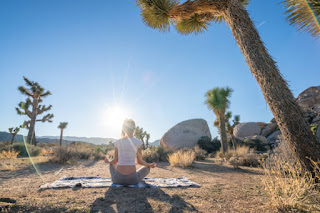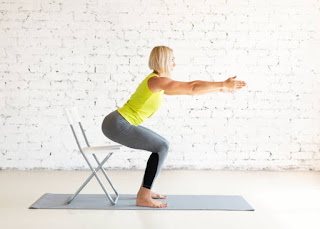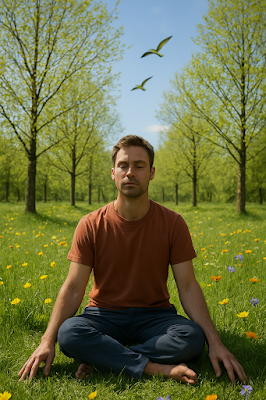Embracing Yoga for Holistic Health: Styles, Benefits, and Practices
Yoga is often seen as a workout for flexibility and strength, but the benefits of holistic yoga go far beyond physical fitness. By blending postures, breathwork, meditation, and mindful living, holistic yoga creates balance for your body, mind, and spirit. If you’ve ever felt that your practice could be deeper or more connected, this guide will help you understand how a holistic approach to yoga can transform your practice into a complete pathway to wellness.
The Benefits of Holistic Yoga: Beyond Physical Fitness

Holistic Yoga: Elevating Your Practice Beyond the Mat
Yoga isn’t just a trend—it’s a pathway to overall well-being that nurtures your body, mind, and spirit. However, with so many styles and approaches, it’s easy to get overwhelmed. If you’ve been curious about how to deepen your practice, this guide will help you discover the power of holistic yoga and why it’s the key to transforming your practice from routine to a more integrated, fulfilling journey.
What is Holistic Yoga?
Holistic yoga isn’t a specific tradition or style, but it refers to a complete approach that focuses on the whole being—rather than isolated parts. When teachers and practitioners talk about taking a holistic approach, they mean engaging with all aspects of yoga, from the physical postures to the breath, mind, and even lifestyle choices. So, how does it work? What does it mean for your personal practice?
Holistic Yoga: A Complete Approach to Wellness
Holistic yoga encourages you to address the body, mind, and soul in harmony. Instead of focusing solely on asanas (postures), it integrates a variety of practices that elevate the entire experience. When we say “holistic,” we’re talking about everything working together—breath, movement, energy, and intention—all working toward balance.
According to the Cambridge Dictionary, something “holistic” means dealing with or treating the whole of something or someone, not just a part. This concept applies beautifully to yoga. When all parts of your practice work together, you experience the synergy—where the sum is greater than its parts.
Moving Beyond Poses: Holistic Yoga in Action
In the modern world, yoga is often associated almost exclusively with physical postures. Yet, holistic yoga reminds us that asana is only one piece of the puzzle. Traditional practices such as pranayama (breath control), mudras (hand gestures), bandhas (energy locks), and various meditation techniques are equally crucial for a balanced practice.
For example, pranayama techniques help regulate energy, while mudras and bandhas direct that energy throughout the body. Cleansing techniques such as neti (nasal cleansing) and shankparakshalana (intestinal cleansing) further enhance physical and energetic well-being.

Dynamic and Calm Practices: Finding Balance in Movement
A truly holistic approach to yoga includes both dynamic and restful practices. It’s not just about the vigorous flows you see on social media—deep stretches, holding poses for longer periods, and engaging in restorative movements are equally essential. A holistic practice encourages you to find balance, blending active and passive poses in a way that nourishes your body from the inside out.
You’ll also incorporate the breath, ensuring your physical practice aligns with your breathwork. In this way, your entire system benefits, not just your muscles and joints.
Meditation in Holistic Yoga: Beyond Mindfulness
In holistic yoga, meditation goes beyond simply “being present.” While mindfulness is an important aspect of meditation, holistic yoga invites you to explore different dimensions of the mind. This includes concentration, visualization, and even exploring subtle energy layers.
By expanding your meditation practice to include techniques like antar mouna (inner silence) or yoga nidra, you can engage the mind and spirit in more profound ways. This holistic approach helps you strengthen concentration, increase mental clarity, and tap into your body’s subtle energy systems.
Living Yoga Off the Mat: Karma Yoga and Devotion
Holistic yoga doesn’t end when your mat is rolled up. It extends into how you live, how you interact with the world, and how you carry out your daily tasks. Karma yoga, or the yoga of action, encourages you to be mindful in everything you do, not just during your practice.
This might mean performing your daily chores with attention and care or engaging in work without attachment to the outcome. Holistic yoga also invites you to cultivate devotion—whether through chanting, rituals, or simply offering gratitude in your meditation.
Holistic Diet: Nourishing Your Body for Yoga
A holistic yoga practice doesn’t overlook what you eat. Food is fuel for the body and has a direct impact on your physical and mental state. Aligning your diet with your practice ensures that you’re supporting your body in all aspects of health. A balanced, mindful diet keeps you energetic and mentally sharp, enhancing both your yoga practice and overall well-being.
Examples of Holistic Yoga: Satyananda Tradition
One beautiful example of a holistic yoga system is the Satyananda (or Bihar) tradition. This style integrates asanas, pranayama, mudras, bandhas, and meditation into a seamless, holistic approach. Practices like Kriya Yoga combine dynamic physical movements with breath and concentration, leading to deeper mental clarity and spiritual growth.

How to Make Your Yoga Practice More Holistic
You don’t have to change your entire routine to adopt a holistic approach. Start by incorporating pranayama into your practice, or try yoga nidra to enhance relaxation and mental focus. Pay attention to what you eat, and practice karma yoga by being mindful in your daily activities.
If your current yoga routine is mostly focused on poses, there’s still so much more to explore. With a holistic approach, you’ll find that yoga can become a richer, more meaningful part of your life—one that touches every aspect of your well-being.
Conclusion: Discover the Depth of Holistic Yoga
Holistic yoga offers more than just physical benefits; it’s a gateway to a more balanced, intentional life. Whether you’re new to yoga or have been practicing for years, taking a holistic approach can help deepen your connection with yourself, your practice, and the world around you.
By integrating the physical, mental, and spiritual dimensions, holistic yoga helps you cultivate a practice that’s truly complete. So take that next step—explore beyond the poses, and discover how yoga can transform your life in ways you never imagined.





